What is Primitive Camping?
Primitive camping, often referred to as backcountry camping or wilderness camping, is a form of outdoor recreation where individuals immerse themselves in the natural environment with minimal modern amenities. Unlike traditional campground settings with designated campsites and facilities, primitive camping involves venturing off the beaten path into remote and undeveloped areas, such as national forests, wilderness areas, or backcountry trails.
Campers typically rely on lightweight and portable gear, such as tents, sleeping bags, and cooking equipment, to establish temporary shelters and sustain themselves during their outdoor adventures.
With no access to electricity, running water, or restroom facilities, primitive campers must rely on their outdoor skills and resourcefulness to meet their basic needs and navigate the challenges of living in the wild. This stripped-down approach to camping allows individuals to disconnect from the distractions of modern life and reconnect with the rhythms of nature, fostering a deeper appreciation for the natural world and a sense of self-reliance and adventure.

Photo by Saroj Gajurel
In recent years, primitive camping has experienced a significant rise in popular appeal, drawing outdoor enthusiasts seeking authentic and immersive outdoor experiences. This surge in interest can be attributed to a variety of factors, including a growing desire to disconnect from the digital world, a longing for adventure and exploration, and a renewed appreciation for the simplicity and purity of outdoor living. As more people seek out opportunities to escape the confines of urban life and reconnect with nature, primitive camping has emerged as a thrilling trend, offering a unique and unforgettable way to experience the great outdoors.
The Allure of Primitive Camping
Primitive camping offers an enchanting escape from the trappings of modern life, drawing outdoor enthusiasts with its promise of raw, unfiltered experiences. This form of camping invites adventurers to immerse themselves in the pristine beauty of nature, away from the noise and distractions of everyday living.

Photo by Roman Pohorecki
The allure of primitive camping lies in its simplicity and the profound connection it fosters with the natural world. By relying on self-sufficiency and embracing the challenges of the wild, campers find a unique blend of peace, adventure, and personal growth that is both deeply rewarding and rejuvenating.
1. Connection With Nature
Primitive camping provides a unique opportunity to connect with nature on a deeply personal level. Away from the artificial lights and sounds of urban life, campers can experience the natural world in its most authentic form. The tranquility of the wilderness allows you to hear the rustling of leaves, the chirping of birds, and the flowing of streams, creating a symphony of natural sounds that soothe the mind and spirit.
This deep immersion fosters a greater appreciation for the environment and its delicate ecosystems. Observing wildlife in their natural habitats, studying plant life, and witnessing the interplay of natural elements can be profoundly educational and inspiring. Such experiences often lead to a stronger commitment to environmental conservation and a desire to protect these precious natural spaces.

Photo by Andy Vu
2. Escape From Modern Life’s Distractions
In today’s digital age, constant connectivity and information overload can lead to stress and mental fatigue. Primitive camping offers a rare chance to unplug from technology and escape the incessant demands of modern life. Without the distractions of smartphones, computers, and social media, you can fully engage with your surroundings and the present moment.
This digital detox can significantly improve mental well-being, reducing anxiety and promoting mindfulness. The simplicity of life in the wilderness encourages introspection and reflection, allowing you to gain clarity and perspective. The absence of artificial light pollution also means better sleep quality, as your body aligns more closely with the natural day-night cycle.
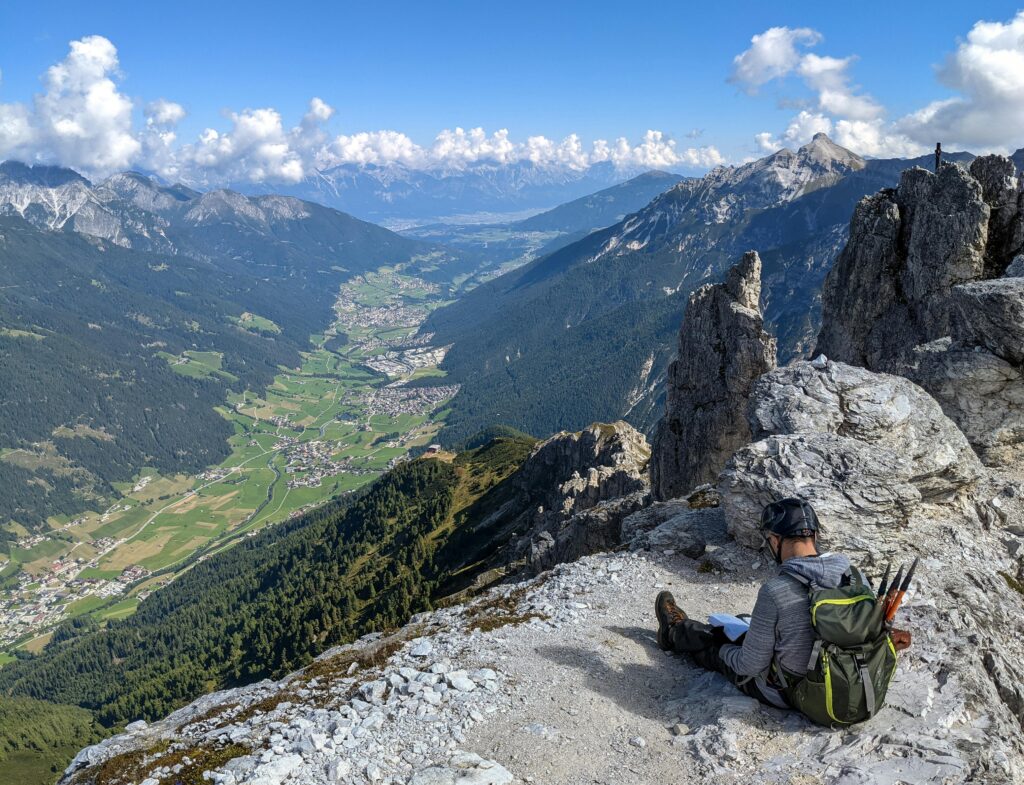
Photo by Ronny Siegel
3. Sense of Adventure and Self-Reliance
The simplicity of primitive camping presents a rewarding challenge that appeals to the adventurous spirit. Without the conveniences of modern amenities, campers must rely on their skills, ingenuity, and resourcefulness to navigate and thrive in the wilderness. This self-reliance is not only empowering but also deeply satisfying.
Building a fire, setting up a shelter, and finding and purifying water are essential skills that foster a sense of accomplishment. The unpredictable nature of the outdoors adds an element of excitement and spontaneity to the experience. Every hike, every meal prepared over an open flame, and every night spent under the stars is a testament to your ability to adapt and overcome.

Photo by Alena Beliaeva
Benefits of Primitive Camping
Primitive camping offers a unique and rewarding experience that goes beyond traditional camping, providing numerous benefits for both the mind and body. By diving deep into nature with minimal modern amenities, you can enjoy a deeper connection with the environment and reap various physical, mental, and emotional rewards.

Photo by Oleksandr P
Primitive camping also encourages creativity and problem-solving, as campers often need to devise innovative solutions to challenges encountered in the wild. Additionally, the immersive nature of primitive camping can heighten the senses, making you more attuned to the sights, sounds, and scents of the natural world. Finally, this form of camping fosters a profound sense of achievement and satisfaction, as successfully navigating and thriving in a remote environment is a testament to one’s skills and resilience.
1. Mental and Physical Health Benefits
Primitive camping often involves physical exertion, such as hiking long distances, climbing hills, or carrying heavy packs. These activities provide excellent cardiovascular exercise and strengthen muscles, contributing to overall physical fitness. The physical challenges also release endorphins, which improve mood and reduce stress.
Mentally, the need to solve problems, navigate unfamiliar terrain, and manage resources sharpens cognitive skills and enhances mental resilience. The sense of accomplishment that comes from overcoming these challenges can boost self-esteem and confidence. Additionally, the mental and physical demands of primitive camping can serve as a powerful reset, breaking the monotony of everyday routines and invigorating the mind and body.

Photo by Beepin4
2. Developing Survival Skills and Resilience
Primitive camping is an excellent way to develop essential survival skills and build resilience. Without the comforts of modern amenities, campers must learn to rely on their resourcefulness and adaptability to meet basic needs. Skills such as fire-building, shelter construction, water purification, and navigation become crucial. This hands-on experience not only boosts confidence and self-reliance but also prepares individuals to handle unexpected challenges both in the wilderness and in everyday life.

Photo by Saleh Bakshiev
3. Deepening Appreciation for Nature
One of the most profound benefits of primitive camping is the deepened appreciation for nature it fosters. By spending extended periods in the natural environment, campers develop a greater awareness and understanding of the ecosystems around them. This intimate connection with nature encourages a sense of stewardship and responsibility towards the environment. Witnessing the beauty of untouched landscapes, observing wildlife in their natural habitats, and experiencing the tranquility of the outdoors can inspire a lifelong commitment to conservation and sustainable living.

Photo by PNW Production
Exciting Activities for Primitive Campers
Primitive camping opens up a world of engaging and fulfilling activities that connect you intimately with the natural environment. Delving deep into the serene beauty of untouched landscapes, campers can find solace and adventure in equal measure. These activities not only challenge physical abilities and stimulate the mind but also nurture a profound sense of peace and contentment.

Photo by Mike
From the thrill of discovering hidden trails to the calm of a starlit night, each experience enriches your connection to the wild, offering moments of personal growth and lasting memories. Here are some exciting activities that can enhance your camping experience, providing both adventure and relaxation.
1. Hiking and Exploring Nearby Trails
Hiking is a cornerstone of primitive camping, offering the chance to explore diverse landscapes and discover hidden gems. Whether you’re trekking through dense forests, climbing rugged mountains, or wandering along serene rivers, hiking allows you to connect with the land on a deeply personal level. Trails can lead you to breathtaking viewpoints, secluded waterfalls, and peaceful meadows, each with its own unique charm.
Hiking not only provides excellent physical exercise but also a mental escape. The rhythmic motion and the beauty of your surroundings can lead to a meditative state, reducing stress and promoting a sense of well-being. Remember to carry a map, compass, or GPS device, and always inform someone about your hiking plans for safety.

Photo by Christopher Camitan
2. Fishing in Secluded Streams or Lakes
Fishing in remote streams or lakes provides both a relaxing pastime and a practical way to supplement your food supply. The peacefulness of waiting for a bite, combined with the thrill of catching your own meal, makes fishing a rewarding experience. The tranquility of early morning or late afternoon by the water’s edge, surrounded by nature, offers a perfect setting for reflection and relaxation.
Ensure you have the proper fishing license and adhere to local regulations regarding catch limits and protected species. Respect the environment by practicing catch and release when appropriate and using eco-friendly tackle.

Photo by cottonbro studio
3. Wildlife Observation and Birdwatching
Primitive camping sites are often rich in wildlife. Spend time observing animals in their natural habitat and enjoy the diversity of bird species in the area. This activity not only enhances your knowledge of local fauna but also provides a calming and meditative experience, as you quietly watch and listen to the natural world around you.
Bring a pair of binoculars and a field guide to help identify various species. Early morning and late evening are the best times for wildlife observation, as animals are most active during these periods. Remember to maintain a respectful distance and avoid disturbing the animals.

Photo by Kampus Production
4. Stargazing in Unpolluted Night Skies
Far from city lights, primitive camping offers some of the best stargazing opportunities. The clarity of the night sky in remote areas allows you to see stars, constellations, and celestial events that are often obscured by light pollution. Stargazing can be a profoundly awe-inspiring experience, reminding you of the vastness and beauty of the universe.
Bring a star chart or a stargazing app to help identify constellations and planets. A telescope or binoculars can enhance the experience, but even with the naked eye, the night sky can be mesmerizing. Lie back on a blanket, enjoy the cool night air, and let the stars captivate you.

Photo by Kirk Thornton
5. Photography Opportunities in Natural Settings
Capture the stunning landscapes and unique wildlife with your camera. Primitive camping provides endless photography opportunities to document your adventure and create lasting memories. Whether you’re photographing a breathtaking sunrise, a majestic animal, or the intricate details of a plant, nature photography allows you to share the beauty of the wilderness with others.
Consider the lighting, composition, and perspective to create compelling images. Early morning and late afternoon, known as the golden hours, provide the best natural light for photography. Respect the environment and wildlife by maintaining a safe distance and not disturbing natural habitats.

Photo by Andre Moreira
6. Nature Journaling or Sketching
Engage in creative activities like nature journaling or sketching. Document your observations, thoughts, and experiences to deepen your connection with the natural world. This practice encourages mindfulness and helps you to notice the small details of your surroundings, fostering a deeper appreciation for the environment.
Bring a sturdy notebook, pencils, and watercolors if you wish to add color to your sketches. Take the time to sit quietly and observe your surroundings, capturing the essence of what you see and feel. This can be a therapeutic activity, helping to slow down and savor the moment.

Photo by John Diez
7. Meditation and Yoga in Serene Outdoor Spaces
Practice meditation and yoga in the peaceful outdoor environment. The tranquility of nature enhances these activities, promoting relaxation and mental clarity. The fresh air, natural sounds, and beautiful scenery create the perfect setting for inner reflection and physical well-being.
Find a flat, comfortable spot, preferably with a view that inspires peace and calm. Morning and evening are ideal times for meditation and yoga, as the light and temperatures are typically more pleasant. Bring a yoga mat or a blanket for comfort, and allow yourself to be fully present in the moment.

Photo by Ron Lach
8. Foraging for Wild Edibles (With Proper Knowledge)
With the proper knowledge and caution, foraging for wild edibles can be a fascinating and rewarding activity. Learn to identify safe and nutritious plants to supplement your meals. This practice connects you with the land in a unique way, teaching you about the edible resources available in the wild and enhancing your self-sufficiency.
Educate yourself thoroughly before attempting to forage. Use field guides, attend workshops, or join experienced foragers to learn which plants are safe to eat and which are not. Always harvest responsibly, taking only what you need and ensuring the sustainability of the plant populations.

Photo by Saleh Bakshiev
9. Engaging in Storytelling or Campfire Games
Gather around the campfire for storytelling or games. These activities foster camaraderie and create memorable experiences with fellow campers. Sharing stories and playing games in the wilderness can be a joyful and bonding experience, enriching your camping trip.
Classic campfire games like charades, twenty questions, or flashlight tag can provide hours of entertainment. Storytelling, especially tales of adventure or local folklore, can captivate and inspire. The warmth and light of the campfire create a perfect setting for sharing laughter and creating lasting memories.

Photo by cottonbro studio
10. Learning Wilderness Survival Skills Through Hands-On Practice
Use your time in the wilderness to practice and refine essential survival skills. Hands-on experience is invaluable for building confidence and competence in outdoor living. Whether you’re learning to build a fire, navigate with a map and compass, or purify water, these skills are crucial for safe and successful primitive camping.
Take the opportunity to practice these skills in a real-world setting. Building a shelter, identifying edible plants, or finding and purifying water sources are practical skills that enhance your self-reliance. Consider taking a wilderness survival course to further develop your abilities and knowledge.

Photo by Araz Yurtseven
Essential Gear for Primitive Camping
Preparing for a primitive camping trip requires careful planning and packing the right gear. Since you’ll be far from modern amenities and conveniences, having the appropriate equipment is crucial for ensuring safety, comfort, and a successful outdoor experience. The key is to strike a balance between carrying essential items and maintaining a lightweight pack, as you’ll need to transport everything on your own.

Photo by Lum3n
By thoughtfully selecting versatile, durable, and multi-purpose gear, you can minimize weight while maximizing functionality. Additionally, familiarizing yourself with the proper use and maintenance of your equipment beforehand will help you avoid potential issues in the field, ensuring a smooth and enjoyable camping adventure. Here are some essential items you need for primitive camping:
1. Basic Camping Equipment: Tents, Sleeping Bags, and Cooking Tools
A solid foundation of basic camping equipment is essential for a comfortable and enjoyable primitive camping experience. These essential items provide shelter, warmth, and sustenance, allowing you to thrive in the wilderness. Let’s delve into the key components of this foundational gear.
Tents: A sturdy, reliable tent is fundamental for primitive camping. Choose a tent that suits the environment you’ll be camping in, whether it’s designed for heavy rain, strong winds, or cold temperatures. A good tent provides shelter from the elements, keeps insects at bay, and offers a secure space to store your gear.
Sleeping Bags: A high-quality sleeping bag is essential for a good night’s rest. Ensure your sleeping bag is appropriate for the weather conditions, offering sufficient warmth and comfort. Consider the bag’s temperature rating and choose one with good insulation properties, such as down or synthetic fill.
Sleeping Pads: Sleeping pads add an extra layer of comfort and insulation between you and the ground. They help prevent heat loss and provide cushioning, making your sleep more comfortable and restful. Inflatable, foam, or self-inflating pads are common options.
Cooking Tools: Efficient and lightweight cooking tools are vital for meal preparation. A portable stove or camping stove allows you to cook meals quickly and efficiently. Bring lightweight pots, pans, and utensils, and don’t forget waterproof matches or a lighter. For simplicity, consider a mess kit that includes a pot, pan, cup, and utensils in one compact package.

Photo by Murray Hemingway
2. Navigation Tools: Maps, Compass, and GPS Devices
Navigating the untamed wilderness requires more than just a sense of direction; it demands reliable tools and a keen understanding of your surroundings. With the right navigation tools at your disposal, you can confidently explore remote trails, find hidden gems, and navigate safely through rugged terrain. The following are essential tools that will guide you on your primitive camping journey:
Maps: Detailed topographic maps of the area are indispensable for navigation. These maps show terrain features, trails, water sources, and other important landmarks. They are essential for planning routes and identifying your location.
Compass: A reliable compass is crucial for navigation, especially in areas with limited visibility or unmarked trails. Learn how to use a compass in conjunction with a map to determine directions and navigate accurately.
GPS Devices: While traditional navigation tools are essential, a GPS device adds an extra layer of security. Modern GPS devices provide precise location data, track your route, and can help you find your way if you get lost. Ensure your GPS device is fully charged and consider carrying extra batteries or a portable charger.

Photo by Josh Hild
3. Safety Gear: First Aid Kit, Multi-Tool, and Emergency Supplies
In the wild, safety is paramount, and being prepared for emergencies is non-negotiable. With the right safety gear in your pack, you can handle unforeseen challenges with confidence and composure. From minor injuries to unexpected situations, having essential safety equipment ensures you’re equipped to handle whatever comes your way. These are some indispensable safety gear every primitive camper should carry:
First Aid Kit: A comprehensive first aid kit is essential for addressing injuries and medical emergencies. Your kit should include bandages, antiseptic wipes, tweezers, pain relievers, medical tape, and any personal medications. Familiarize yourself with basic first aid procedures and ensure your kit is easily accessible.
Multi-Tool: A versatile multi-tool is invaluable for primitive camping. It combines several tools into one compact device, such as pliers, knives, screwdrivers, and scissors. A multi-tool can assist with various tasks, from equipment repairs to food preparation.
Emergency Supplies: Prepare for unexpected situations by packing essential emergency supplies. These might include an emergency whistle for signaling, a waterproof fire starter for lighting fires in adverse conditions, a space blanket for warmth, and a small mirror for signaling. A personal locator beacon (PLB) or a satellite messenger device can also be crucial for alerting rescue services if needed.

Photo by Baihaki Hine
4. Additional Gear for Comfort and Convenience
While survival in the wilderness demands resilience and resourcefulness, a touch of comfort and convenience can make your primitive camping experience all the more enjoyable. Supplementing your essential gear with additional items tailored to your needs ensures you can relax and recharge amidst nature’s embrace. The following gear adds an extra layer of comfort and convenience to your outdoor adventure:
Backpack: A durable, comfortable backpack is necessary for carrying all your gear. Choose a pack with adequate capacity, supportive straps, and organizational pockets. Ensure it distributes weight evenly to prevent strain during long hikes.
Water Bottles and Filtration Systems: Hydration is critical in the wilderness. Carry durable water bottles and a reliable water filtration system or purification tablets. This ensures you have access to clean drinking water, even if natural sources are contaminated.
Clothing: Pack clothing appropriate for the weather conditions. Layering is key: bring moisture-wicking base layers, insulating mid-layers, and waterproof outer layers. Don’t forget a hat, gloves, and sturdy hiking boots for protection and comfort.
Lighting: A headlamp or flashlight is essential for navigating in the dark. Pack extra batteries and consider a lantern for ambient light around your campsite.
Food and Snacks: Plan and pack nutritious, lightweight meals and snacks. Dehydrated or freeze-dried foods are convenient and easy to prepare. Include high-energy snacks like nuts, dried fruits, and energy bars for sustenance during hikes.

Photo by Ali Kazal
Choosing the Perfect Location
Selecting the ideal location for your primitive camping adventure sets the stage for a memorable outdoor experience. Whether you seek solitude in remote wilderness areas or prefer established campsites with amenities, careful consideration of various factors ensures you find a spot that aligns with your preferences and needs. The location you choose can profoundly impact your overall enjoyment and comfort during your camping trip.

Photo by Todd Trapani
From breathtaking scenery to convenient access to outdoor activities, the right camping spot enhances every aspect of your outdoor adventure. Take the time to research and evaluate potential locations, weighing factors such as terrain, safety, and seasonal considerations. By choosing wisely, you can create lasting memories and forge a deeper connection with nature in your chosen camping paradise.
1. National Parks and Wilderness Areas
National parks and wilderness areas offer unparalleled opportunities for primitive camping amidst stunning natural landscapes. These protected areas boast diverse ecosystems, scenic vistas, and abundant wildlife, providing an immersive wilderness experience. Research different parks and wilderness areas to find ones that match your interests and skill level. Consider factors such as terrain, elevation, climate, and available amenities when making your selection.

Photo by Anna Urlapova
2. Tips for Finding Secluded Spots
For those seeking solitude and tranquility, finding secluded camping spots off the beaten path is a priority. Look for remote areas away from popular trails and tourist attractions, where you can immerse yourself in nature without distractions. Consider exploring lesser-known regions or backcountry zones within national parks, where you’re more likely to find solitude and pristine wilderness.

Photo by Ali Kazal
3. Legal Considerations and Permits
Before embarking on your camping trip, familiarize yourself with any legal considerations and permit requirements for your chosen location. Some wilderness areas may require permits for camping, especially in backcountry or designated wilderness zones. Research permit regulations, reservation procedures, and camping restrictions to ensure compliance with park regulations. Obtaining permits in advance helps preserve fragile ecosystems and ensures a positive camping experience for all visitors.

Photo by Ronstik
4. Safety Considerations
Prioritize safety when selecting a camping location by assessing potential hazards and risks. Avoid camping in areas prone to natural disasters, such as flooding, avalanches, or wildfires. Research local wildlife and familiarize yourself with wildlife safety protocols to mitigate encounters with animals. Check weather forecasts and be prepared for changing weather conditions, especially in mountainous or remote areas. Choose campsites with clear evacuation routes and easy access to emergency services if needed.

Photo by Gaspar Zaldo
Planning and Preparation
Effective planning and thorough preparation are essential steps for a successful primitive camping trip. From researching the area to packing essential gear and supplies, careful preparation ensures you’re equipped to handle the challenges and enjoy the rewards of outdoor living.

Photo by cottonbro studio
Furthermore, before setting out on your primitive camping adventure, take the time to evaluate the potential risks and hazards associated with your chosen destination. Assess factors such as local weather patterns, wildlife activity, and terrain conditions to anticipate potential challenges and plan accordingly. Be prepared to adapt your itinerary or camping setup based on changing circumstances and unexpected events. By conducting a thorough risk assessment and planning for contingencies, you can minimize potential dangers and enhance the safety and enjoyment of your primitive camping experience.
1. Researching the Area: Wildlife, Weather, and Terrain
Before embarking on your camping trip, conduct comprehensive research on the area you plan to visit. Learn about the local wildlife, including potential hazards such as bears, snakes, or insects, and how to safely coexist with them. Familiarize yourself with the terrain, including trails, water sources, and natural landmarks, to plan your route and camping spots.
Check the weather forecast for your camping dates and prepare accordingly. Pack appropriate clothing and gear for expected weather conditions, including rain gear, warm layers, and sun protection. Be prepared for sudden changes in weather, especially in mountainous or coastal regions, by packing extra clothing and shelter options.

Photo by Imad Clicks
2. Packing Essentials vs. Luxuries
When packing for a primitive camping trip, strike a balance between essential gear and optional luxuries. Consider your basic needs for shelter, warmth, food, and water, and prioritize packing items that address these needs. Essential gear includes a tent, sleeping bag, cooking equipment, navigation tools, first aid kit, and safety supplies.
Limit non-essential items to avoid overpacking and unnecessary weight. Consider the duration of your trip, the remoteness of your camping location, and your personal preferences when deciding which luxuries to bring. Pack lightweight and multi-purpose items whenever possible to maximize efficiency and minimize bulk.

Photo by Anthony Acosta
3. Meal Planning and Food Storage
Plan your meals and food supplies carefully to ensure you have enough nourishment for the duration of your camping trip. Choose lightweight, non-perishable foods that are easy to prepare and pack efficiently. Consider dehydrated or freeze-dried meals, energy bars, nuts, dried fruits, and instant soups for convenient and nutritious options.
Organize your food supplies into sealed containers or bear-resistant food storage bags to prevent wildlife encounters and maintain cleanliness. Store food away from your sleeping area and follow proper food storage guidelines to minimize the risk of attracting animals. Dispose of food waste properly and pack out all trash to leave no trace of your presence in the wilderness.

Photo by Stijn Dijkstra
Skills Every Primitive Camper Needs
Mastering essential outdoor skills is fundamental for a safe, enjoyable, and rewarding primitive camping experience. From setting up camp to navigating through the wilderness, these skills empower campers to thrive in remote and challenging environments. They not only enhance your self-reliance and confidence but also deepen your connection with nature as you learn to adapt and thrive in the great outdoors.

As you develop proficiency in these skills, you’ll gain a greater appreciation for the beauty and intricacies of the natural world while honing your abilities to live harmoniously within it. These are some key skills every primitive camper should possess:
1. Setting Up a Shelter
The ability to set up a shelter is paramount for staying safe and comfortable in the wilderness. Whether using a tent, tarp, or improvised shelter, knowing how to pitch and secure your shelter effectively protects you from the elements and provides a cozy retreat at the end of the day. Practice pitching your shelter in various conditions and terrain types, ensuring it’s sturdy and properly ventilated.
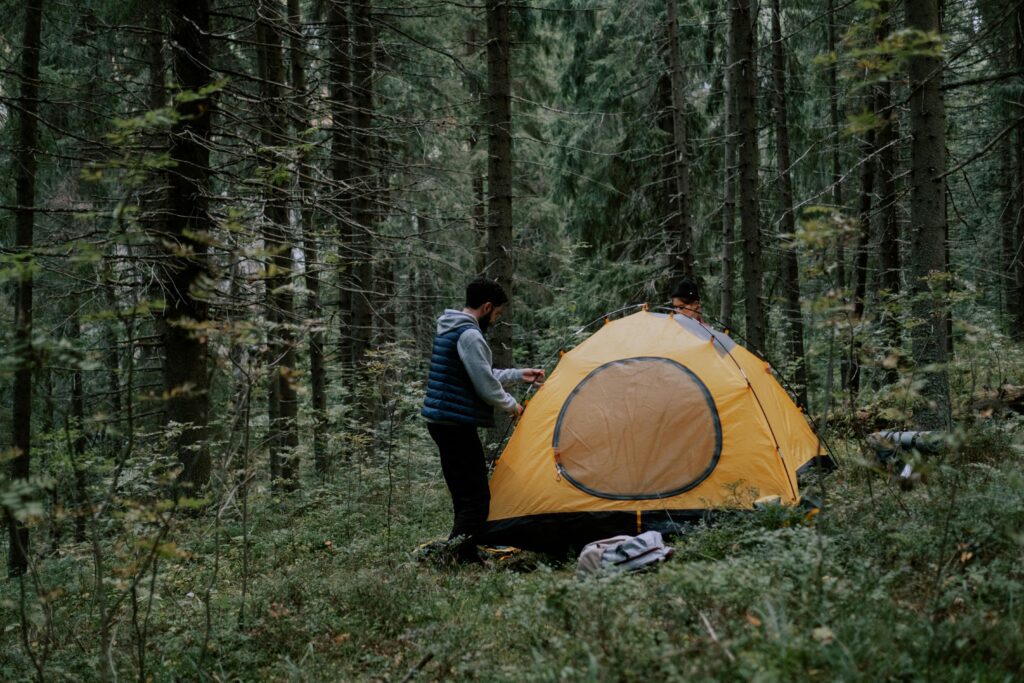
2. Fire-Building Techniques
Mastery of fire-building techniques is essential for warmth, cooking, and signaling for help in emergency situations. Learn different methods of starting a fire, including using a lighter, matches, or primitive methods such as friction or flint and steel. Understand the principles of fire safety and proper fire management to prevent accidents and minimize environmental impact.

Photo by Vlad Bagacian
3. Water Purification Methods
Access to clean drinking water is crucial for survival in the wilderness. Familiarize yourself with various water purification methods, such as boiling, chemical treatments, filtration, or ultraviolet (UV) sterilization. Identify reliable water sources and employ appropriate purification techniques to ensure safe and potable drinking water throughout your camping trip.

Photo by Jens Johnsson
4. Basic First Aid and Wilderness Survival Skills
Being equipped with basic first aid knowledge and wilderness survival skills can mean the difference between a minor inconvenience and a life-threatening situation in the wilderness. Learn how to assess and treat common injuries, illnesses, and emergencies encountered in outdoor environments. Carry a well-stocked first aid kit and know how to use its contents effectively. Additionally, practice essential wilderness survival skills such as navigation, shelter-building, signaling for help, and identifying edible plants to increase your self-reliance and resilience in the wild.

Photo by Ahmet Mert
5. Navigation and Map Reading
Navigational proficiency is essential for exploring unfamiliar terrain and finding your way in the wilderness. Learn how to use a map and compass to orient yourself and navigate trails, terrain features, and landmarks. Practice map reading, route planning, and compass navigation techniques to confidently navigate through diverse landscapes and challenging conditions.

Photo by cottonbro studio
6. Knot-Tying Skills
Basic knot-tying skills are invaluable for securing gear, rigging shelters, and improvising solutions in the wilderness. Learn essential knots such as the bowline, taut-line hitch, square knot, and clove hitch, and practice tying and untying them until they become second nature. Mastering these knots enhances your versatility and efficiency in various camping situations.

Photo by David McElwee
7. Wildlife Awareness and Safety
Understanding wildlife behavior and practicing wildlife safety protocols are essential for coexisting harmoniously with nature. Educate yourself about local wildlife species, their habitats, and potential risks associated with encounters. Take precautions to minimize the likelihood of wildlife encounters, such as storing food properly, disposing of waste responsibly, and making noise while hiking to avoid surprising animals. Know how to respond appropriately in the event of a wildlife encounter, whether it’s calmly backing away from a bear or deterring smaller animals from your campsite.

Photo by Mihailo Jovicevic
Challenges and How to Overcome Them
Primitive camping presents a myriad of challenges that require resilience, resourcefulness, and adaptability to overcome. From unpredictable weather to encounters with wildlife, understanding and preparing for potential challenges is essential for a safe and enjoyable outdoor experience. However, these challenges also provide opportunities for personal growth, self-discovery, and connection with nature.

Photo by cottonbro studio
Embracing the uncertainties of primitive camping allows campers to develop valuable life skills, such as problem-solving, resilience, and self-reliance, that can be applied in various aspects of life. By confronting and overcoming challenges in the wilderness, primitive campers cultivate a deeper appreciation for the natural world and gain a sense of empowerment and accomplishment that extends beyond their outdoor adventures.
1. Weather Extremes and How to Prepare
Weather conditions can fluctuate rapidly in the wilderness, posing challenges such as sudden storms, temperature fluctuations, and exposure to harsh elements. To prepare for weather extremes, check the forecast before your trip and pack appropriate clothing and gear for anticipated conditions. Bring waterproof layers, insulated clothing, and a sturdy tent capable of withstanding wind and rain. Be prepared to adjust your plans and seek shelter if severe weather strikes, and prioritize safety above all else.

Photo by seyfi durmaz
2. Dealing with Wildlife Encounters
Encounters with wildlife are a natural part of primitive camping, but they can also present risks and challenges. To minimize the likelihood of negative encounters, practice proper food storage and waste disposal techniques to avoid attracting animals to your campsite. Familiarize yourself with local wildlife species and their behavior, and know how to respond calmly and appropriately in the event of an encounter. Carry bear spray or other deterrents if camping in bear country, and always respect wildlife by observing from a safe distance and avoiding feeding or approaching animals.

Photo by Irmina
3. Navigational Challenges and Staying Safe
Navigating through unfamiliar terrain can be challenging, especially in remote wilderness areas with limited signage or trail markers. To stay safe and on course, carry a detailed map and compass or GPS device, and familiarize yourself with basic navigation techniques before your trip. Plan your route carefully, noting landmarks, water sources, and potential hazards along the way. Stay oriented by regularly checking your map and using natural features to confirm your location. If you become lost or disoriented, stay calm, assess your surroundings, and consider retracing your steps or seeking higher ground for a better vantage point.
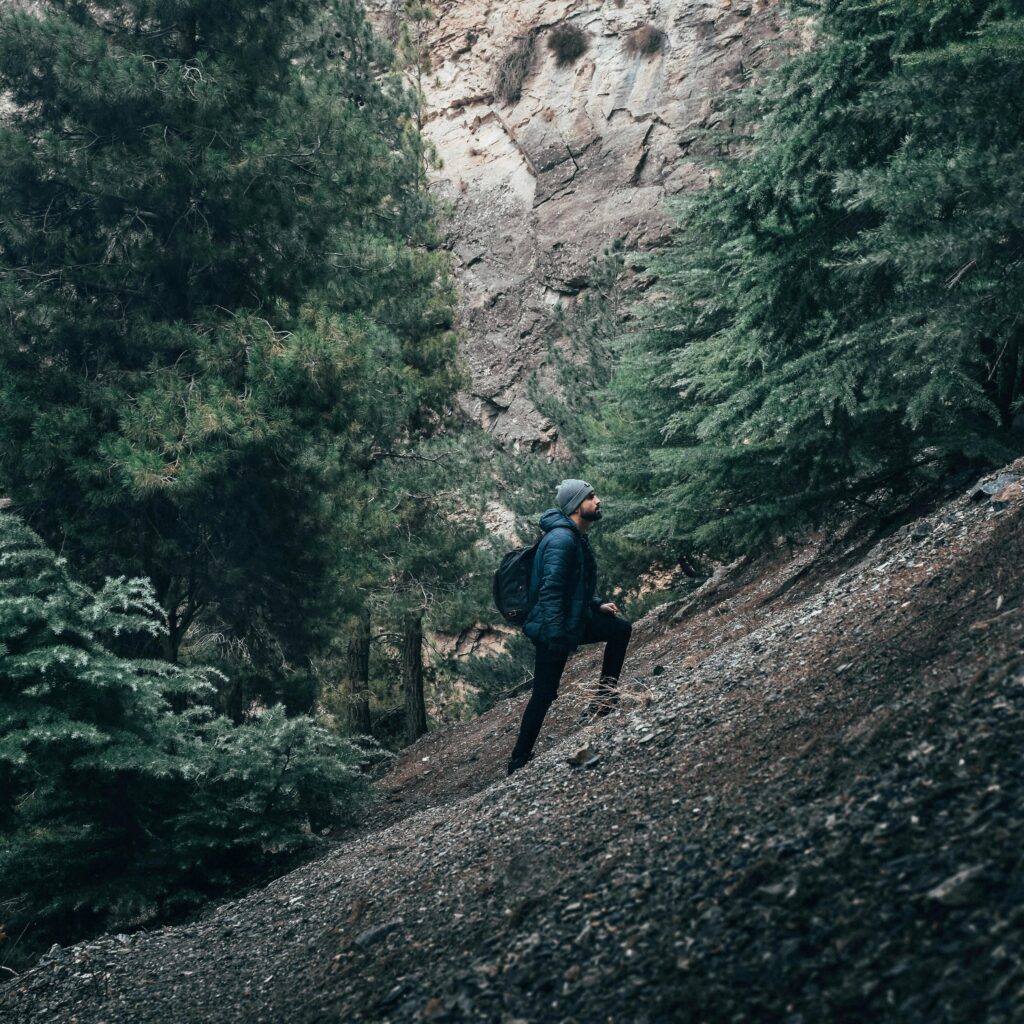
Photo by Suliman Sallehi
4. Physical and Mental Fatigue
Primitive camping requires physical endurance and mental resilience to overcome the physical and mental challenges of outdoor living. To combat fatigue, pace yourself during hikes, take regular breaks, and stay hydrated and well-nourished. Listen to your body and rest when needed, and prioritize self-care activities such as stretching, meditation, and journaling to recharge your mind and body. Maintain a positive mindset and focus on the rewards of your outdoor adventure, drawing strength from the beauty and serenity of the natural world.
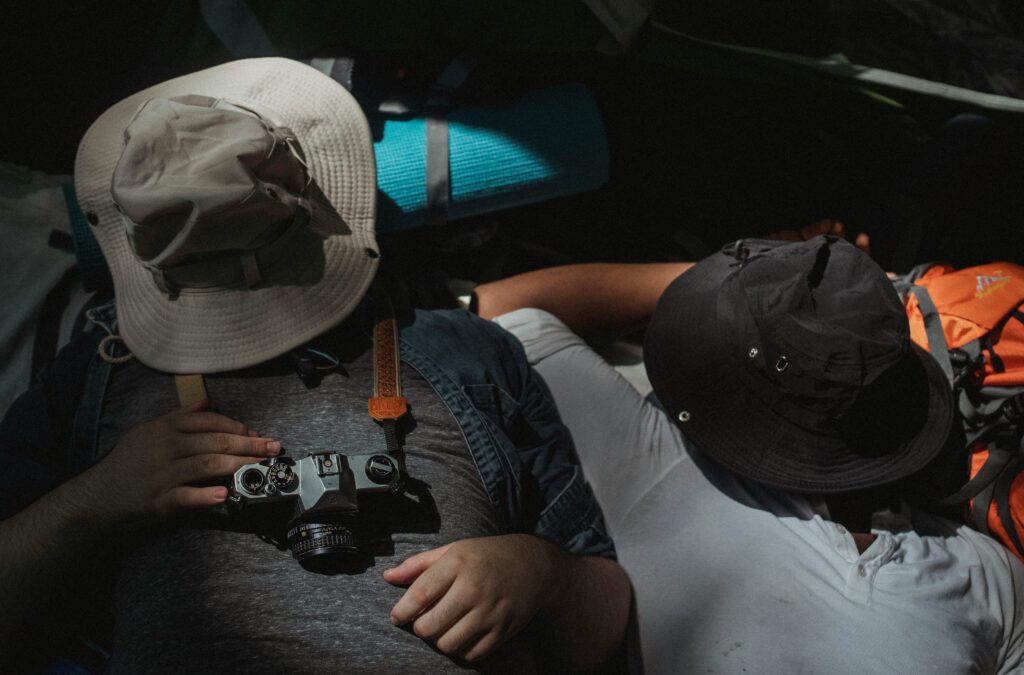
Photo by Kamaji Ogino
5. Safety Hazards and Emergency Preparedness
Despite careful planning and preparation, unexpected emergencies can arise during primitive camping trips. To mitigate safety hazards, carry a well-equipped first aid kit and know how to administer basic first aid for common injuries and illnesses. Familiarize yourself with emergency procedures for handling injuries, medical emergencies, and environmental hazards, and communicate your itinerary and emergency plans with a trusted contact before your trip. Stay informed about potential risks in your camping area and be prepared to respond calmly and decisively in case of an emergency, seeking assistance from park rangers or emergency services if needed.
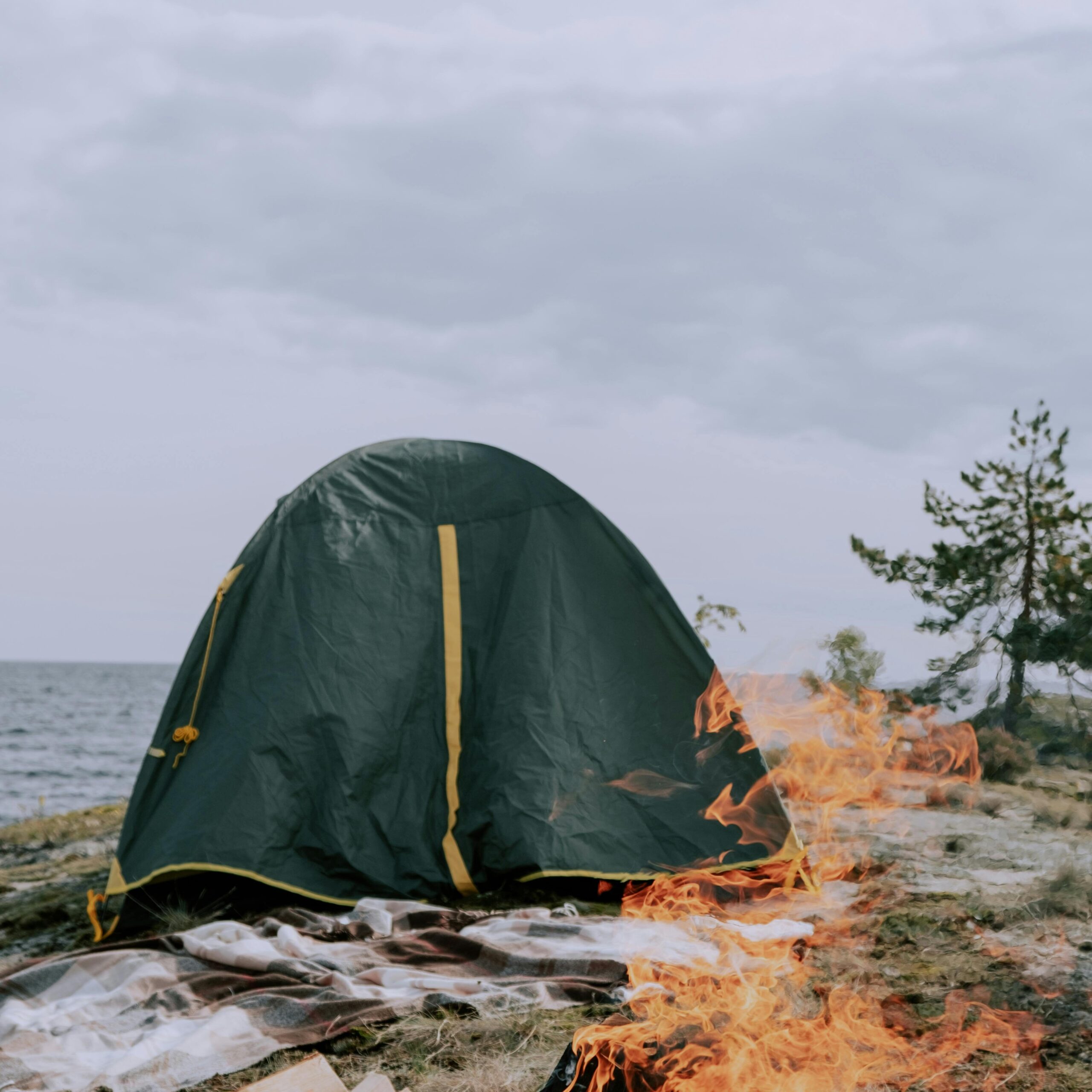
Photo by cottonbro studio
6. Psychological Challenges and Mindset
Primitive camping can also present psychological challenges such as loneliness, fear, and anxiety, especially for solo campers or those venturing into remote areas. To maintain a positive mindset, focus on the present moment and immerse yourself fully in the sights, sounds, and sensations of nature. Practice mindfulness techniques such as deep breathing, visualization, and grounding exercises to alleviate stress and anxiety. Stay connected with loved ones through regular check-ins or journaling to combat feelings of isolation, and embrace the opportunity for self-reflection and personal growth that comes with solitude in the wilderness.
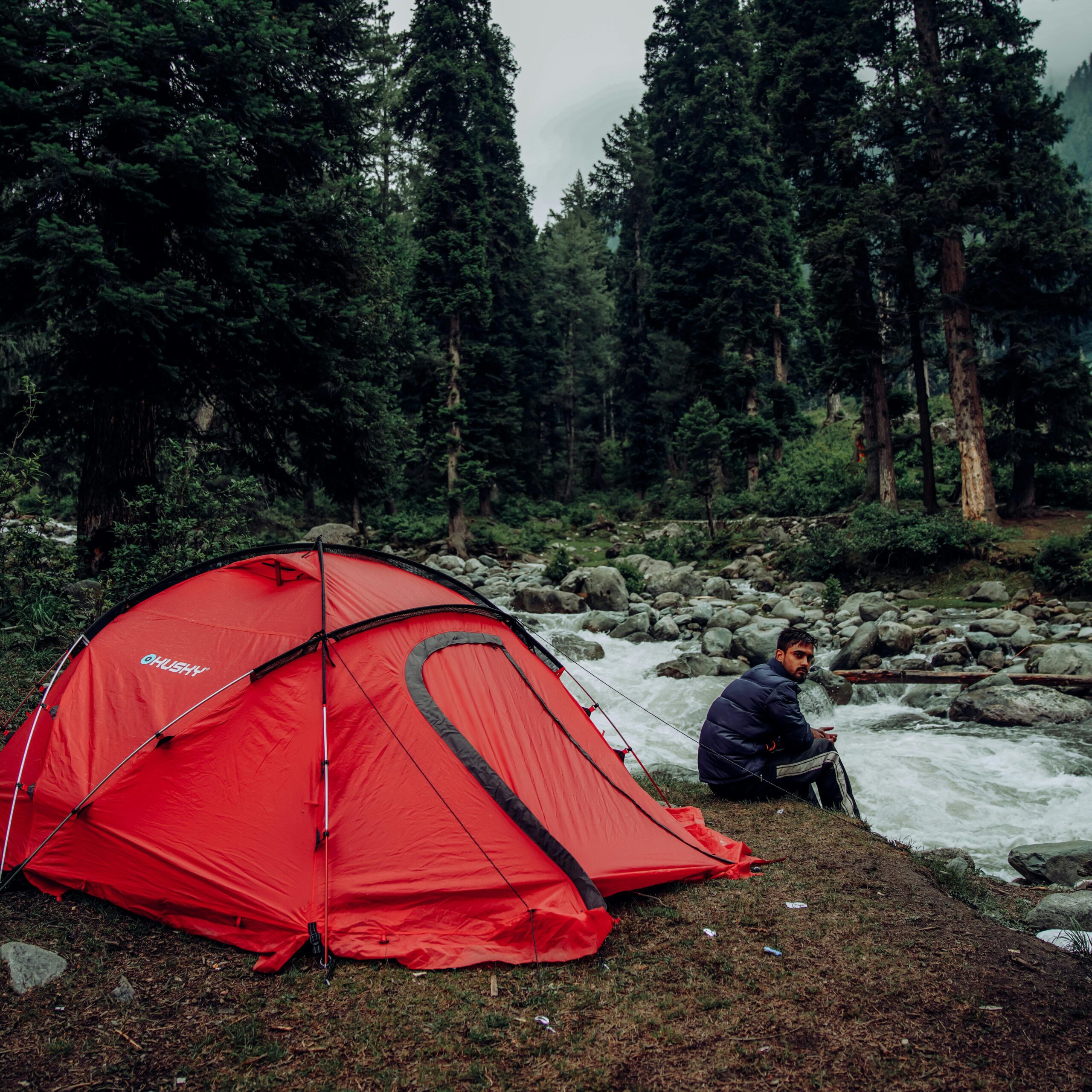
Photo by Imad Clicks
Getting Started with Your First Primitive Camping Trip
Embarking on your first primitive camping trip is an exciting adventure filled with anticipation and the promise of unforgettable experiences in the great outdoors. Irrespective of if you’re a seasoned camper looking to venture off the beaten path or a novice explorer eager to connect with nature, careful planning and preparation are essential for a successful and enjoyable journey.

Photo by Cliford Mervil
While primitive camping offers the opportunity to escape the hustle and bustle of daily life and immerse yourself in nature’s tranquility, it also requires a certain level of self-sufficiency and outdoor skills. By taking the time to research your destination, pack the necessary gear, and acquire basic camping skills, you can embark on your primitive camping adventure with confidence and excitement, ready to embrace the challenges and rewards of outdoor living.
1. Beginner-Friendly Locations and Tips
When starting out with primitive camping, it’s essential to choose locations that offer a balance of accessibility and a true back-to-basics experience. Look for areas that provide well-marked trails and designated campsites but remain free of modern amenities such as potable water and restroom facilities. National forests, remote sections of national parks, and wilderness areas are excellent choices for novice primitive campers.
Additionally, consider joining a guided camping trip or outdoor education program to gain valuable skills and confidence under the guidance of experienced instructors. This approach ensures you learn the ropes of primitive camping in a supportive environment while still embracing the essence of the experience.
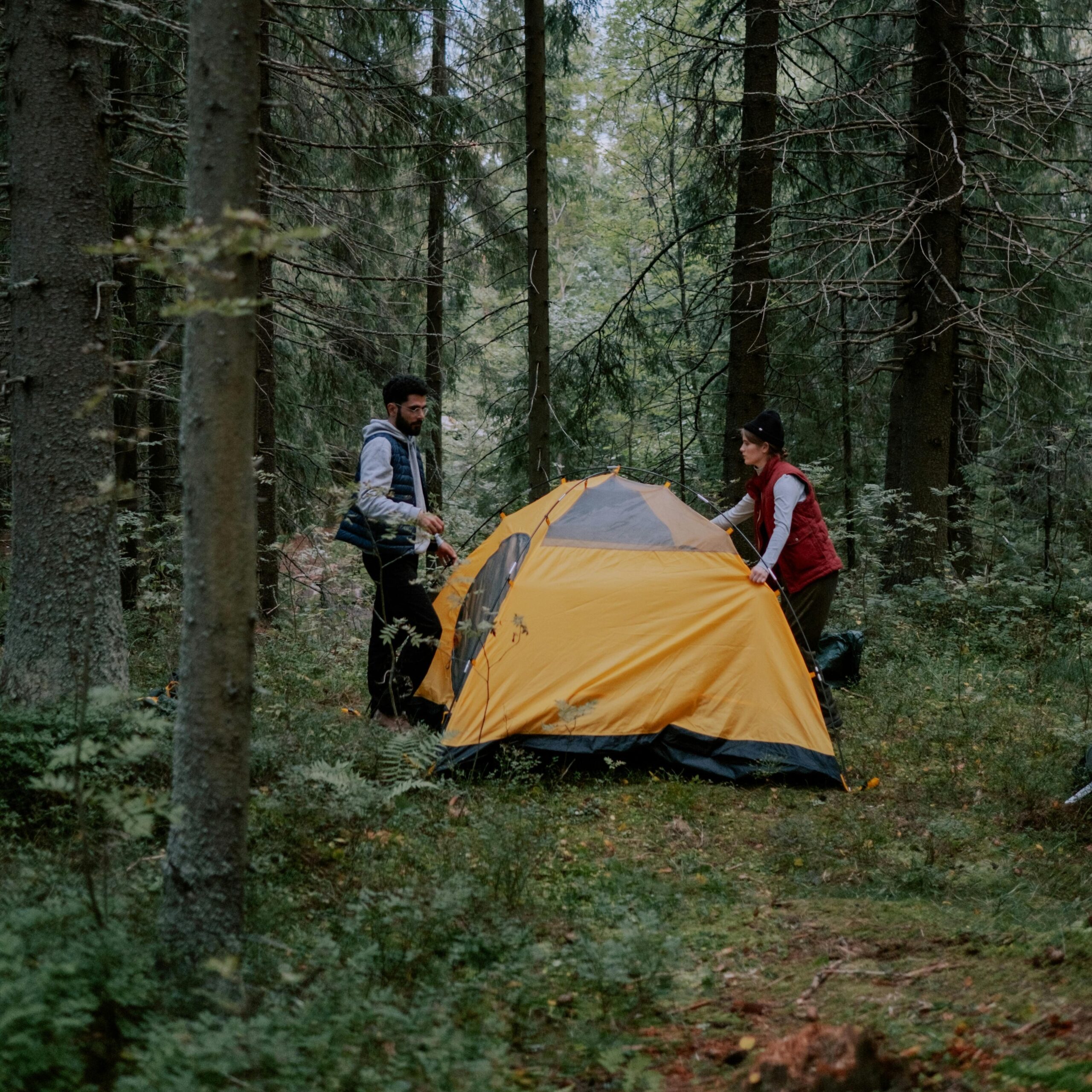
Photo by cottonbro studio
2. Building Confidence Gradually
Approach your first primitive camping trip with a sense of excitement and curiosity, but also with a healthy dose of caution and respect for the wilderness. Start with shorter trips close to home or in familiar environments to build confidence and experience gradually. Practice setting up your tent, building a fire, and cooking meals outdoors in your backyard or local campground before venturing into more remote areas. As you gain experience and proficiency in outdoor skills, gradually extend the duration and complexity of your camping trips, exploring new destinations and challenging yourself to step outside your comfort zone.

Photo by Sanoop gs
3. Encouragement to Embrace the Experience
Embrace the spirit of adventure and discovery as you embark on your first primitive camping trip, appreciating both the joys and challenges of outdoor living. Approach each moment with an open mind and heart, allowing yourself to immerse fully in the sights, sounds, and sensations of nature. Take time to appreciate the simple pleasures of camp life, from cooking meals over an open fire to stargazing under the night sky.
Stay flexible and adaptable in the face of unexpected obstacles or setbacks, viewing them as opportunities for learning and growth rather than barriers to enjoyment. Remember that every camping trip, no matter how small or humble, holds the potential for transformative experiences and lasting memories.
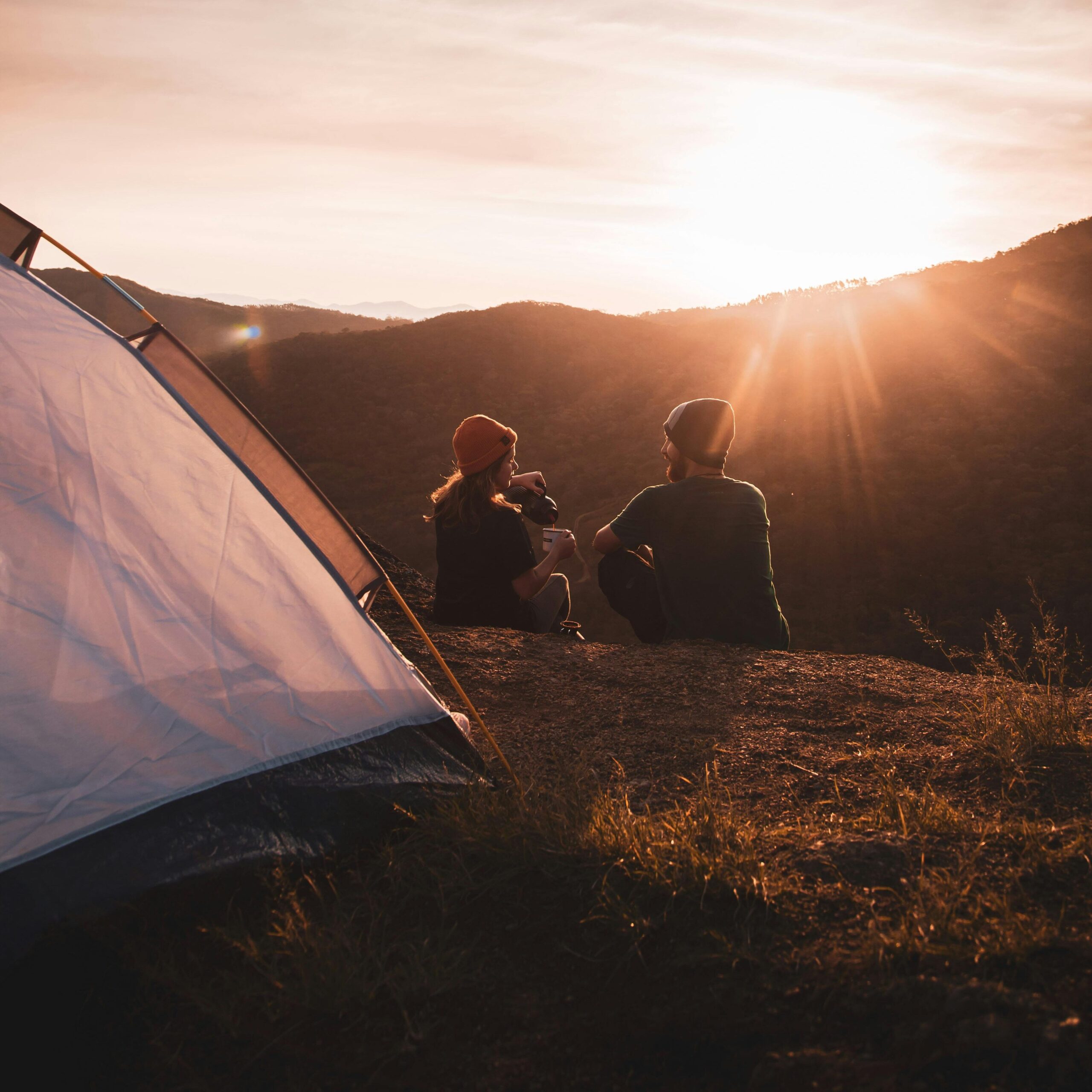
Photo by Laura Gafforelli
Embracing the Wilderness: Your Gateway to Primitive Camping Bliss
All in all, venturing into primitive camping opens the door to a world of adventure, self-discovery, and connection with nature. Regardless of your level of outdoor experience, careful planning and preparation pave the way for unforgettable experiences in the wilderness. By immersing yourself in the beauty and serenity of nature, you have the opportunity to escape the noise of modern life and embrace the simplicity and authenticity of outdoor living.
When you embark on your primitive camping journey, remember that each challenge you encounter presents an opportunity for growth and learning. Whether facing unpredictable weather, navigating unfamiliar terrain, or encountering wildlife, resilience and adaptability are your greatest allies. By approaching challenges with a positive mindset and a spirit of adventure, you can overcome obstacles and emerge stronger and more confident in your outdoor abilities.

Photo by Quang Nguyen Vinh
Ultimately, primitive camping is not just about the destination—it’s about the journey and the experiences that shape us along the way. From setting up camp under a canopy of stars to sharing stories around a crackling campfire, every moment in the wilderness holds the potential for discovery and connection.
Embrace the unknown, cherish the simplicity, and savor the moments of solitude and wonder that primitive camping affords. For in the heart of nature, you’ll find not only adventure but also a deeper understanding of yourself and the world around you.
Ready to embark on your own primitive camping adventure? Take the first step towards wilderness bliss and plan your next outdoor escape today!
Need some information on how to select the ideal tent? Unsure what to pack when camping? We’ve got you covered!
Finding the Ideal Camping Tent
Essential Items to Pack for Camping
FAQ
What is the Best Time of Year for Primitive Camping?
The best time for primitive camping depends on your location and personal preferences. Generally, late spring, summer, and early fall are popular times due to milder weather. Always check local conditions, weather forecasts, and any seasonal restrictions before planning your trip.
How Do I Start a Fire While Primitive Camping?
To start a fire, gather dry tinder (small, easily ignitable materials like leaves or bark), kindling (small sticks), and larger firewood. Use a fire starter, matches, or a lighter to ignite the tinder, gradually adding kindling and then firewood as the fire grows. Always build fires in designated fire rings or use a portable fire pit if available, and follow local regulations regarding fire safety.
How Can I Protect Myself From Insects While Primitive Camping?
To protect yourself from insects, wear long sleeves and pants, use insect repellent containing DEET or other effective ingredients, and consider using a mosquito net or screen for sleeping. Avoid camping near stagnant water, where insects like mosquitoes are more prevalent.
What Should I Do If I Get Lost While Primitive Camping?
If you get lost, stay calm and try to retrace your steps. Use a map and compass or GPS device to reorient yourself. If you’re unable to find your way, stay in one place to make it easier for rescuers to find you. Signal for help using a whistle, mirror, or bright-colored clothing.
How Do I Cook Food While Primitive Camping?
Cooking methods for primitive camping include using a portable camping stove, cooking over an open fire, or using lightweight cookware designed for backpacking. Plan simple, nutritious meals that are easy to prepare and carry, and always follow Leave No Trace principles by packing out all food waste.
What Type of Clothing Should I Wear for Primitive Camping?
Wear moisture-wicking, quick-drying clothing suitable for the weather conditions. Dress in layers to adjust to temperature changes, and pack rain gear and a warm jacket for colder nights. Sturdy, comfortable hiking boots are essential for navigating rough terrain.
How Can I Ensure a Good Night’s Sleep While Primitive Camping?
Choose a flat, dry campsite free of rocks and roots. Use a quality sleeping bag rated for the expected temperatures and an insulating sleeping pad for comfort. Earplugs and a sleep mask can help block out noise and light for better sleep.
How Much Water Should I Bring for Primitive Camping?
Bring at least one gallon of water per person per day for drinking, cooking, and basic hygiene. If you’re camping near a water source, bring a water purification method to replenish your supply. Always plan for extra water in case of emergencies.
What Are Some Beginner-Friendly Primitive Camping Destinations?
Beginner-friendly destinations include national forests, state parks, and established wilderness areas with relatively easy access and well-marked trails. Some popular beginner spots include Shenandoah National Park (Virginia), Great Smoky Mountains National Park (Tennessee/North Carolina), and Yosemite National Park (California).
How Do I Deal With Food Storage to Avoid Attracting Wildlife?
Store food in bear-resistant containers or hang it from a tree at least 10 feet off the ground and 4 feet away from the trunk. Keep all food, trash, and scented items like toiletries away from your sleeping area. Always follow local regulations and guidelines for food storage to prevent wildlife encounters.
What is the Difference Between Tent Camping and Primitive Camping?
Tent camping usually occurs in established campgrounds with amenities like restrooms and water. Primitive camping involves camping in undeveloped areas without amenities, relying on self-provided resources for shelter and necessities.
Any Advice for Primitive Camping With Family?
Preparing for primitive camping with your family involves thorough research of the area, packing essential gear like tents and cooking supplies, and planning meals. Ensure you have a well-equipped first aid kit, navigation tools, and communication devices for emergencies. Practice Leave No Trace principles, plan outdoor activities, and have an emergency plan in place. Embrace the opportunity to disconnect and enjoy nature together, making lasting memories in the wilderness.







